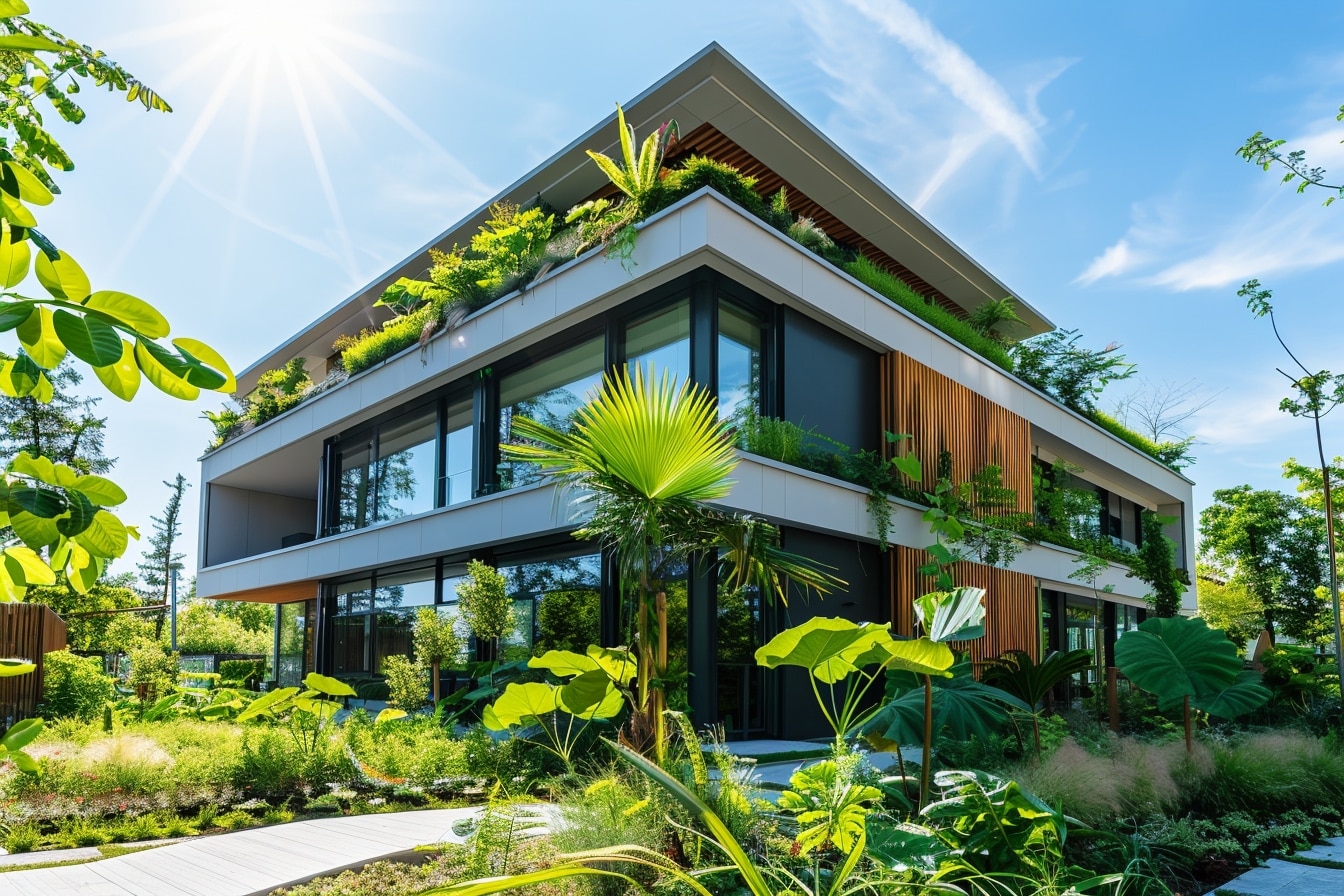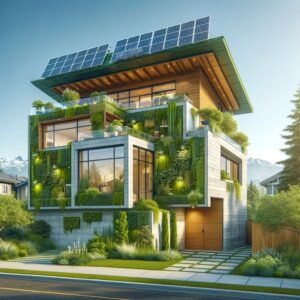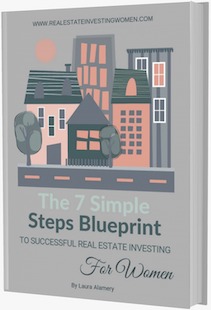Did you know that sustainable investing in green building investments and friendly investment property has grown by 34% in the past year? This surge shows a clear shift towards eco-friendly approaches to real estate, including sustainable homes, sustainable buildings, and sustainable landscaping. Investors are increasingly prioritizing green buildings, energy-efficient designs, and sustainable materials in real estate investment and development as part of their sustainability strategy. These practices not only benefit the environment but also offer long-term financial gains for the real estate investor.
Sustainable investing isn’t just a trend; it’s becoming the norm. Eco-friendly properties often have lower operating costs and higher tenant satisfaction. As more people demand greener living spaces, the market for sustainable real estate continues to expand. Dive into this post to explore how you can make smart, eco-conscious investments in the real estate sector.
Key Takeaways
-
Prioritize Energy Efficiency: Implement energy-efficient systems and renewable energy sources in real estate projects to reduce costs and environmental impact.
-
Seek Green Certifications: Pursue green building certifications like LEED or BREEAM to enhance property value and attract eco-conscious tenants.
-
Optimize Water Use: Invest in water-saving technologies and effective waste management systems to promote sustainability and lower utility expenses.
-
Promote Healthy Indoor Environments: Ensure good air quality, natural lighting, and non-toxic materials to create healthier living spaces.
-
Encourage Sustainable Transportation: Develop properties with access to public transport, bike lanes, and electric vehicle charging stations to reduce carbon footprint.
-
Leverage Technology: Utilize smart technologies and innovative solutions to improve efficiency, sustainability, and the overall appeal of real estate investments.
Benefits of Sustainable Investing
Cost Savings
Sustainable investing can lead to significant cost savings. Energy-efficient buildings use less electricity. This reduces monthly utility bills. Sustainable properties often include water-saving fixtures. These fixtures lower water usage and costs.
In some cases, governments offer tax incentives for eco-friendly buildings. These incentives further reduce expenses. Over time, these savings add up. Property owners can reinvest the money saved into more sustainable investment strategies.
Increased Property Value
Sustainable investments often increase property value. Eco-friendly buildings are in high demand. Tenants prefer living in energy-efficient homes. They also like properties with sustainability practices.
Higher demand means higher rental income. Properties with green certifications can charge premium rents. These certifications assure tenants of the building’s eco-friendliness. As a result, property owners see better returns on their sustainable investment capital.
Risk Mitigation
Sustainable investments help mitigate risks. Environmental regulations are becoming stricter. Buildings that comply with these regulations avoid fines and penalties.
Market shifts also favor sustainable properties. More people are aware of climate change impacts. They prefer investing in eco-friendly real estate. Properties that lack sustainability features may lose market value. Sustainable investment strategies ensure properties stay valuable and desirable.
Energy Efficiency and Renewable Sources
Efficient Systems
Installing energy-efficient systems can significantly reduce utility costs. Efficient systems like HVAC units, water heaters, and insulation help manage energy use effectively. They ensure minimal waste and maximum output. For instance, modern HVAC units use up to 50% less energy than older models.
Energy-Efficient Appliances
Using energy-efficient appliances is another way to cut down on energy consumption. Energy Star-certified appliances are designed to use less electricity without sacrificing performance. These include refrigerators, washing machines, and dishwashers. By switching to these appliances, homeowners can save hundreds of dollars annually on utility bills.
Renewable Resources
Renewable resources like solar and wind power are crucial for sustainable investing in real estate. Solar panels can convert sunlight into electricity, reducing reliance on fossil fuels. Wind turbines harness wind energy to produce power. Both methods lower the carbon footprint of a property.
Solar Panels
ar panels are a popular renewable energy source for homes and buildings. They capture sunlight and convert it into electrical energy. This reduces the need for non-renewable energy sources. Installing solar panels can also provide financial benefits through tax credits and reduced energy bills.
Smart Energy Management
Smart energy management systems optimize how energy is used in a building. These systems monitor usage patterns and adjust settings automatically to save energy. They can control lighting, heating, and cooling based on occupancy and time of day. This leads to more efficient use of resources.
LED Lighting
LED lighting is an eco-friendly alternative to traditional bulbs. LEDs use less electricity and last longer than incandescent or fluorescent lights. They produce less heat, which means less energy wasted as heat loss. Switching to LED lighting can significantly reduce a building’s carbon footprint.
Carbon Footprint Reduction
Reducing the carbon footprint of a property is essential for eco-friendly real estate investments. Using renewable resources and efficient systems helps achieve this goal. Lowering carbon emissions contributes to a healthier environment and aligns with global sustainability goals.
Green Building Certifications
LEED Certification
LEED stands for Leadership in Energy and Environmental Design. It is a widely recognized green building certification. Buildings that achieve LEED certification must meet strict sustainability criteria. These include energy efficiency, water conservation, and indoor environmental quality.
The U.S. Green Building Council (USGBC) developed LEED in 1993. There are different levels of certification: Certified, Silver, Gold, and Platinum. Higher levels indicate greater sustainability achievements.
ENERGY STAR Certification
ENERGY STAR is another prominent certification. It focuses on energy efficiency. The U.S. Environmental Protection Agency (EPA) launched this program in 1992. Buildings with ENERGY STAR certification use less energy than typical buildings.
To earn this certification, buildings must score 75 or higher on the EPA’s energy performance scale. This means they perform better than at least 75% of similar buildings nationwide.
Benefits of Certifications
Certified green buildings attract eco-conscious tenants and buyers. People increasingly prefer sustainable living spaces. Green certifications signal a commitment to environmental responsibility.
These buildings also command higher rents and sale prices. Recognized sustainability standards add value to properties. Investors see certified buildings as lower-risk investments due to their efficient operations.
Sustainable Building Practices
Adopting green building practices is crucial for achieving certifications. These practices include using sustainable materials and reducing waste during construction. Implementing efficient HVAC systems and proper insulation also helps.
Sustainable building design focuses on maximizing natural light and ventilation. This reduces reliance on artificial lighting and air conditioning.
Green Property Management
Green property management ensures buildings maintain their sustainable status. Regular maintenance of energy-efficient systems is vital. Property managers should monitor water usage and implement recycling programs.
Training staff in green practices promotes a culture of sustainability. Tenants should be encouraged to adopt eco-friendly habits as well.
Case Studies
Several notable buildings have achieved high levels of certification. The Empire State Building earned LEED Gold status in 2011 after extensive renovations. These upgrades included energy-efficient windows and improved insulation.
Another example is the Bullitt Center in Seattle, which achieved LEED Platinum status. It features solar panels, rainwater harvesting, and composting toilets.
Water and Waste Management
Water Conservation
Install water-efficient fixtures to conserve water. Low-flow faucets, showerheads, and toilets use less water without sacrificing performance. These fixtures can reduce utility bills and help the environment.
Irrigation systems also play a crucial role. Drip irrigation delivers water directly to plant roots. This reduces evaporation and runoff. Smart controllers adjust watering schedules based on weather conditions. This ensures efficient water use.
Greywater Systems
Greywater systems reuse water from sinks, showers, and laundry. This water is treated and used for irrigation or flushing toilets. It reduces the demand for freshwater.
Rainwater harvesting is another effective method. Collect rainwater from rooftops and store it in tanks. Use this water for landscape irrigation or non-potable uses. Both methods lower water consumption and save money.
Recycling Programs
Implement comprehensive recycling programs to manage waste. Separate materials like paper, plastic, glass, and metal. Provide clearly labeled bins to encourage proper disposal.
Recycling reduces the amount of waste sent to landfills. It also conserves natural resources by reusing materials. Governments often set regulations that require businesses to follow specific recycling practices.
Waste Reduction
Waste reduction starts with smart purchasing decisions. Choose products with minimal packaging. Buy items made from recycled materials.
Encourage tenants or homeowners to compost organic waste. Composting turns food scraps into valuable fertilizer for gardens. It decreases the volume of waste going to landfills.
Sustainable Materials
Use sustainable materials in construction and renovation projects. Recycled steel, reclaimed wood, and low-VOC paints are good options. These materials have a lower environmental impact than traditional ones.
Regular maintenance of buildings also contributes to sustainability. Fix leaks promptly to prevent water wastage. Maintain HVAC systems for energy efficiency.
Government Regulations
Many governments have regulations promoting sustainable practices. These include requirements for water conservation and waste management systems.
Compliance with these regulations is not just mandatory but beneficial. It can lead to incentives such as tax breaks or grants for eco-friendly upgrades.
Healthy Indoor Environments
Proper Ventilation
Proper ventilation ensures good indoor air quality. Efficient homes use mechanical systems to bring in fresh air. These systems remove stale air and pollutants. They often include heat recovery ventilators (HRVs) or energy recovery ventilators (ERVs). HRVs and ERVs save energy while improving air quality.
Non-Toxic Materials
Using non-toxic materials reduces harmful chemicals inside homes. These materials include low-VOC paints, adhesives, and finishes. Low-VOC products emit fewer volatile organic compounds. This leads to healthier environments for occupants.
Natural Lighting
Natural lighting enhances well-being and reduces energy consumption. Large windows and skylights allow more sunlight into homes. Sunlight improves mood and productivity. It also reduces the need for artificial lighting during the day.
Biophilic Design
Biophilic design connects people with nature. It includes elements like indoor plants, natural textures, and water features. These features create a calming environment. Studies show that biophilic design can reduce stress and improve mental health.
Humidity Control
Maintaining proper humidity levels is crucial for comfort and health. High humidity can cause mold growth, while low humidity can lead to dry skin and respiratory issues. Efficient homes use dehumidifiers or humidifiers to regulate humidity levels.
Temperature Regulation
Temperature regulation ensures consistent comfort throughout the year. Insulation plays a key role in maintaining indoor temperatures. High-quality insulation keeps homes warm in winter and cool in summer. This reduces the need for heating and cooling systems, saving energy.
Friendly Practices
Friendly practices contribute to a healthier indoor environment. These include regular maintenance of HVAC systems and using eco-friendly cleaning products. Regular maintenance ensures systems run efficiently, reducing environmental impact.
Green Spaces and Community Amenities
Green Roofs
Green roofs are becoming more popular in urban areas. They provide a place for plants to grow on buildings. These roofs help reduce the urban heat island effect. They also improve air quality and manage stormwater.
Green roofs offer many benefits. They can extend the lifespan of a roof by protecting it from the elements. People living or working in buildings with green roofs enjoy better insulation, which lowers energy costs.
Gardens and Parks
Gardens and parks are vital for sustainable living. They offer recreational spaces for people to relax and exercise. These green spaces also contribute to biodiversity by providing habitats for various species.
Community gardens bring people together. Residents can grow their own food, reducing their carbon footprint. Parks with native plants require less water and maintenance, making them eco-friendly.
Community Amenities
Bike racks and EV charging stations are essential features of green properties. They encourage residents to use environmentally friendly transportation options. This reduces the overall carbon footprint of the community.
EV charging stations support the growing number of electric vehicles on the road. Bike racks promote cycling, which is a healthy and zero-emission mode of transport. Both amenities contribute to a greener lifestyle.
Social Interaction
Shared green areas promote social interaction among residents. These spaces can include playgrounds, picnic areas, and walking trails. People can gather, play, and engage in outdoor activities.
ial interaction fosters a sense of community. It helps build stronger relationships among neighbors. Shared green spaces make neighborhoods safer and more enjoyable places to live.
Community Engagement
Community engagement is crucial for sustainable development. Residents who are involved in planning and maintaining green spaces feel more connected to their environment. This sense of ownership leads to better care of communal areas.
Grants and incentives can support community projects. Local governments often provide funding for eco-friendly initiatives. These grants help communities develop greener spaces and amenities.
Sustainable Transportation Options
Public Transportation
Access to public transportation is vital for sustainable living. It reduces the number of cars on the road, lowering emissions. Cities can invest in bus and train services. This makes commuting easier and more eco-friendly.
In 2018, New York City expanded its subway lines. This helped reduce traffic congestion significantly. Public transit systems should be reliable and affordable.
Bike-Sharing Programs
Bike-sharing programs offer a green alternative to driving. These programs provide bikes at various locations for short-term use. Users can pick up a bike from one station and drop it off at another.
Paris launched its bike-sharing program, Vélib’, in 2007. It now has over 20,000 bikes available. Such initiatives promote sustainable practices and reduce carbon footprints.
Electric Vehicle Charging Stations
Installing electric vehicle (EV) charging stations supports green commuting. EVs produce fewer emissions compared to traditional cars. Having accessible charging stations encourages more people to switch to EVs.
California had over 22,000 public charging stations by 2020. This infrastructure is crucial for promoting environmental sustainability.
Walkable Neighborhoods
Designing walkable neighborhoods reduces reliance on cars. These areas include sidewalks, crosswalks, and pedestrian zones. Residents can walk to shops, schools, and parks easily.
Copenhagen is known for its walkable city design. Over 50% of residents commute by foot or bike daily. Walkable neighborhoods encourage sustainable living and healthier lifestyles.
Sustainable Materials in Infrastructure
Using sustainable construction materials is essential for eco-friendly transportation options. Materials like bamboo and recycled steel are durable and have lower environmental impacts.
Bamboo is a fast-growing plant that regenerates quickly. It is used in building bike paths and pedestrian walkways. Recycled steel reduces waste and conserves natural resources.
Smart Mobility Solutions
Smart mobility solutions integrate technology with transportation. Apps can show real-time public transit schedules or available bike-share units. These solutions make commuting more efficient.
Singapore uses smart technology in its public transport system. Commuters get live updates on bus arrivals and departures via mobile apps.
Technology and Innovation in Real Estate
IoT Sensors
IoT sensors play a crucial role in sustainable real estate. They monitor various parameters like temperature, humidity, and light levels. This data helps property managers optimize energy use.
For example, sensors can adjust lighting based on occupancy. This reduces electricity consumption. Smart thermostats can also regulate heating and cooling efficiently.
Building Management Systems
Building Management Systems (BMS) integrate various building functions. These systems control HVAC, lighting, and security features. BMS enhances operational efficiency.
A well-implemented BMS can reduce energy costs by up to 30%. It also increases the lifespan of building equipment. Property managers can monitor and manage all systems from a central point.
Predictive Analytics
Predictive analytics uses historical data to forecast future trends. In real estate, it helps manage energy consumption better. This technology identifies patterns and predicts peak usage times.
By anticipating high demand periods, buildings can adjust operations accordingly. This minimizes waste and maximizes efficiency. Predictive analytics also aids in maintenance planning, avoiding unexpected breakdowns.
Occupant Engagement Platforms
Engaging occupants is vital for sustainable real estate initiatives. Platforms that encourage eco-friendly practices make a significant impact. For instance, apps can track individual energy usage.
These platforms offer tips for reducing consumption. They may include challenges or rewards for sustainable actions. Occupants become more aware of their environmental footprint.
Impact on Property Values
Technological innovations positively affect property values. Buildings with advanced systems attract more tenants. They also have lower operating costs, making them more appealing to investors.
Sustainable features can increase property value by 10-20%. Energy-efficient buildings often qualify for tax incentives too. This makes them a smart choice for real estate investing.
Real-Life Examples
Several real estate developments showcase these technologies. The Edge in Amsterdam uses IoT sensors extensively. It is one of the most sustainable office buildings globally.
Another example is Hudson Yards in New York City. This development incorporates BMS and predictive analytics. These technologies help manage its vast infrastructure efficiently.
Future Opportunities
The real estate market continues to evolve with new technologies. Innovations like blockchain could revolutionize property management. Virtual reality might change how we view and buy properties.
Investing in tech-savvy buildings offers numerous benefits. They promise higher tenant satisfaction and better returns on investment. Sustainable real estate is not just a trend but the future of the industry.
Investment Strategies and Opportunities
Market Demand
Properties in markets with a strong demand for sustainability are prime targets. Cities like San Francisco and New York have high interest in eco-friendly buildings. These cities offer great potential for green investments.
Investors should research local market trends. Look for areas with policies supporting sustainable development. This can lead to higher returns on investment properties.
Partnering with Green Developers
Partnering with green-focused developers is crucial. These developers prioritize eco-friendly practices. They use materials that reduce carbon footprints and improve energy efficiency.
Working with such contractors ensures the property meets green standards. It attracts environmentally conscious tenants, boosting occupancy rates.
Government Incentives
Governments offer various incentives for sustainable projects. These can include tax breaks, grants, and subsidies. The U.S. government, for example, provides tax incentives for energy-efficient buildings.
Investors should explore these options to maximize savings. Financial incentives can significantly reduce initial costs and improve profitability.
Financial Benefits
Sustainable investments often come with long-term financial benefits. Energy-efficient buildings lower utility costs. This increases net operating income over time.
Green buildings also tend to have higher resale values. Investors can expect better returns when selling eco-friendly properties.
Challenges
Despite the benefits, there are challenges in sustainable investing. Initial costs can be higher due to premium materials and technologies. Finding skilled green developers may also be difficult in some regions.
Investors must weigh these challenges against potential savings and incentives. Proper planning and research can mitigate many of these issues.
Future Trends
The future of sustainable investing looks promising. More people are becoming aware of environmental issues. This trend drives demand for green properties.
Technological advancements will continue to improve energy efficiency. Innovations like smart grids and renewable energy sources will play a significant role.
Long-Term Benefits and Competitive Advantages
Enhanced Reputation
Sustainable investing in real estate boosts a company’s reputation. Buyers appreciate eco-friendly properties. Enhanced brand reputation attracts more customers. People prefer companies committed to social responsibility.
Customer loyalty increases with sustainable practices. Loyal customers often recommend eco-friendly brands. This word-of-mouth can drive new business.
Regulatory Compliance
Sustainable properties meet regulatory standards. Compliance avoids potential fines. Governments enforce strict environmental laws. Regulatory compliance ensures smooth operations.
Meeting these standards demonstrates responsibility. Companies gain trust from stakeholders. This trust can translate into long-term support.
Future-Proofing Properties
Eco-friendly buildings are future-proof. They meet upcoming sustainability standards. This foresight provides a competitive edge. Properties that meet future standards attract forward-thinking buyers.
Future regulations may demand higher eco-standards. Investing now saves costs later. Early adoption of green practices minimizes future expenses.
Financial Benefits
Sustainable real estate offers many financial benefits. Lower operating costs increase profitability. Energy-efficient buildings reduce utility bills. Term cost savings make a big difference over time.
Tax benefits are another advantage. Governments offer incentives for green buildings. These incentives reduce overall tax burdens.
Increased Property Value
Green buildings often have higher market values. Buyers value eco-friendliness in properties. Higher property values result from sustainable investments.
These properties also enjoy higher demand. More buyers seek energy-efficient homes. High demand drives up property prices.
Social Responsibility
Investing in sustainable real estate shows social responsibility. It reflects a commitment to the environment. Companies gain respect from the community.
ially responsible companies attract like-minded investors. This alignment can lead to more funding opportunities.
Operational Savings
Eco-friendly buildings reduce operational costs. Efficient systems lower energy consumption. Lower operating costs lead to significant term savings.
Water-saving fixtures also cut costs. Sustainable materials require less maintenance.
Competitive Edge
Sustainable properties offer a competitive edge in the market. Buyers prefer eco-friendly options. Competitive advantages arise from meeting this demand.
Companies with green buildings stand out. They attract environmentally conscious tenants and buyers.
Demand Growth
Demand for sustainable properties is growing. More buyers seek eco-friendly homes each year. This trend is unlikely to reverse.
Investing in sustainable real estate meets this demand. It positions companies for long-term success.
Final Remarks
Sustainable investing in real estate isn’t just a trend; it’s a smart, eco-friendly approach that benefits your wallet and the planet. By prioritizing energy efficiency, green certifications, and innovative technologies, you create healthier living spaces and communities. These strategies offer long-term advantages and competitive edges in the market.
Ready to make a difference? Start exploring sustainable investment opportunities today. Your choices can lead to a greener future and profitable returns. Dive in, take action, and be part of the change.
Frequently Asked Questions
What are the benefits of sustainable investing in real estate?
Sustainable investing in real estate reduces environmental impact, lowers operating costs, and improves tenant satisfaction. It also enhances property value and attracts eco-conscious investors.
How do energy efficiency and renewable sources contribute to sustainable real estate?
Energy efficiency and renewable sources reduce utility costs, minimize carbon footprints, and increase property value. They make buildings more attractive to tenants and investors who prioritize sustainability.
What are green building certifications?
Green building certifications, like LEED and BREEAM, validate a property’s eco-friendly design and operations. They enhance marketability and can lead to higher occupancy rates and rental premiums.
Why is water and waste management important in sustainable real estate?
Efficient water and waste management reduce operational costs and environmental impact. It conserves resources, reduces waste disposal fees, and supports sustainability goals.
How do healthy indoor environments benefit tenants?
Healthy indoor environments improve air quality, reduce allergens, and enhance overall well-being. This leads to higher tenant satisfaction, retention, and productivity.
What role do green spaces and community amenities play in sustainable real estate?
Green spaces and community amenities promote physical activity, social interaction, and mental well-being. They increase property appeal and support higher occupancy rates.
How can technology and innovation drive sustainability in real estate?
Technology and innovation optimize energy use, enhance building performance, and streamline maintenance. Smart systems improve efficiency, reduce costs, and support sustainable practices.
 Subscribe to our podcast
Subscribe to our podcast 




